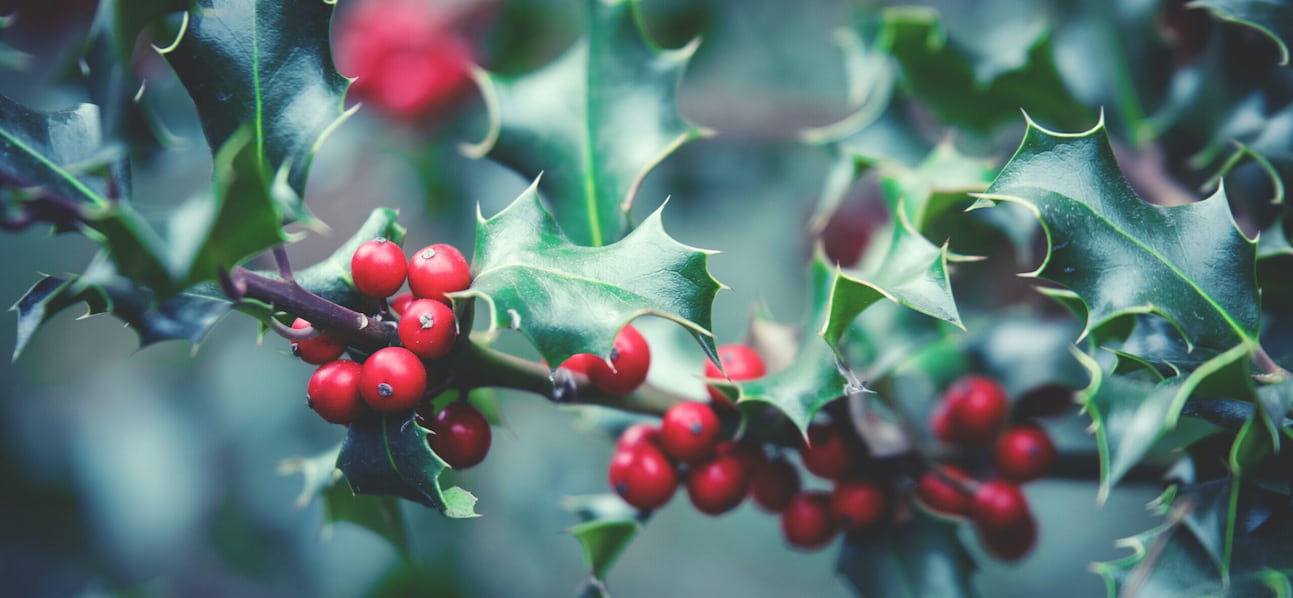Take caution with these holiday plants.
Tis’ the season to decorate for the holidays – be careful choosing what plants you use when decorating. Read more about hazardous holiday plants.
Some of your favorite holiday plants have a reputation for being hazardous and even poisonous to young children. It may not have crossed your mind to check, and you are not alone.
Six hazardous holiday plants

- Mistletoe – Poisonous & choking hazard. Mistletoes are most commonly hung high in doorways to bring good luck and show signs of love and friendship during the holiday season, however, if they get in the hands of a young one, this is one of the most hazardous holiday plants. The mistletoe is a parasitic plant that contains toxins that, if consumed, can cause vomiting and diarrhea. The berries can also be a choking hazard for young ones. If consumption occurs, seek medical help and contact poison control.
- Holly Berries – Poisonous & choking hazard. Boughs of Holly are okay, but the berries are not. The berries produced by Holly bushes can be poisonous to people and pets when consumed. Drowsiness, vomiting, diarrhea, and dehydration are symptoms caused by the toxic compounds in these berries. Consider keeping holly bushes placed high in your house, or consider a holly bush without red berries to avoid having hazardous holiday plants in your home. If consumption occurs, seek medical help and contact poison control.
- Poinsettias – Irritate & choking hazard. The bright red, green, and white colors make Poinsettias attractive for holiday décor. This plant is not toxic or poisonous, but the sap can cause minor skin irritations and rashes from handling the plant flowers and leaves. Due to the nature of the leaves, this plant can also be a choking hazard for children. Symptoms include upset stomach, GI irritation, and a rash around the mouth if consumed. If consumption occurs, seek medical help and contact poison control.
- Holiday Trees & Wreaths – choking hazard. It’s not the holidays without festive trees and wreaths. Fir, spruce, and pine trees make for safer holiday décor and are generally non-toxic to children and pets but take caution to the needles. Live trees and wreaths will shed needles during the season. These needles are stiff and sharp, making them a choking hazard if placed inside the mouth. It can also cause gastrointestinal issues if swallowed. If consumption occurs, seek medical help.
- Christmas Cactus – Choking hazard. Christmas Cacti are not poisonous, but the spiky leaves can cause skin wounds, irritation,s and could be a choking hazard in the hands of a young one. Keep your Christmas cacti out of the reach of young, exploring hands.
- Amaryllis – Poisonous. Bulbs, including Amaryllis, are popular gifts and Christmas plants used in decoration, however, they are also one of the most hazardous holiday plants you can have in your home. The ingestion of a bulb may induce stomach pain followed by vomiting, diarrhea, and tremors. They can also cause burning and irradiations to the throat and skin. Blubs can be mistaken as onions or shallots. If consumption occurs, seek medical help.
Think twice about your holiday decoration. Keep poisonous and hazardous holiday plants up high. Watch pets and children as they interact around all of your holiday decorations. Seek medical help immediately if a toxic plant is consumed. Never wait for more symptoms or signs to seek medical help.
Check out Alaska Poison Control System to learn how to prevent avoidable tragedy.
We’re here when you need us. LaTouche Pediatrics

